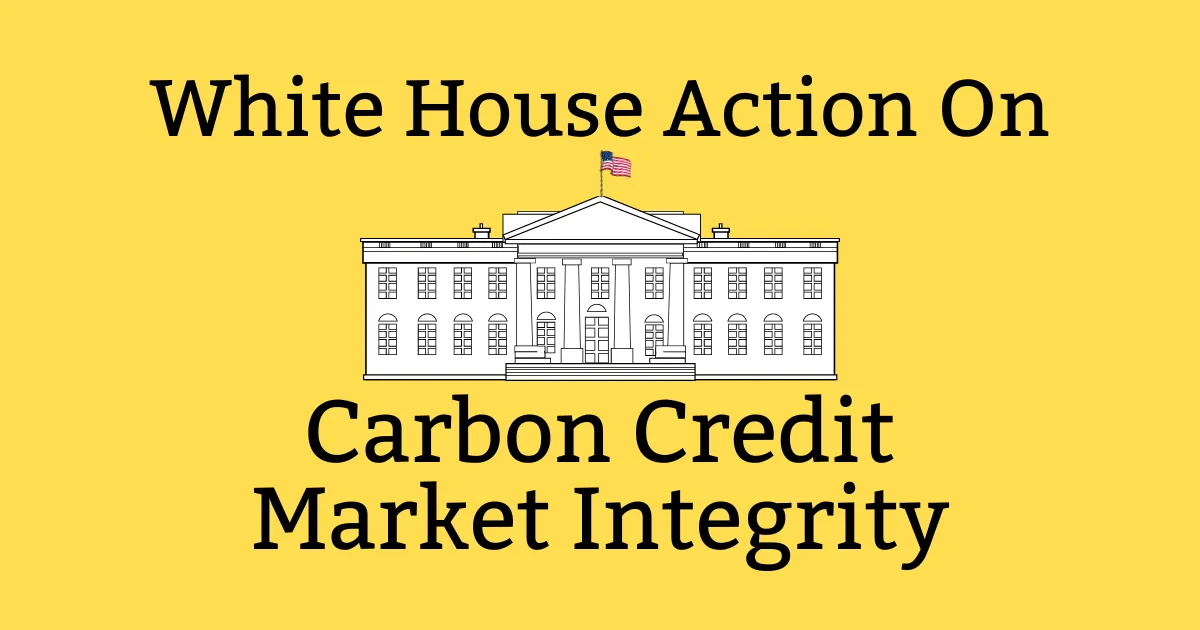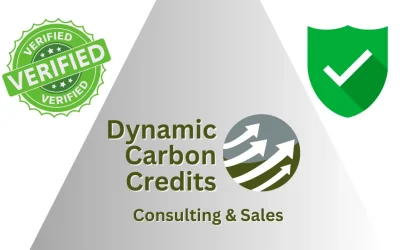The White House recently released a Fact Sheet highlighting the Biden-Harris Administration’s commitment to carbon credit market integrity by enhancing voluntary carbon markets (VCMs). This presents significant opportunities for farmers and landowners to engage in carbon credit generation, offering both environmental and economic benefits.
Creating Clarity in Carbon Credit Market Integrity
The USDA’s Agricultural Marketing Service (AMS) has published a Request for Information (RFI) in the Federal Register, seeking public input on protocols used in VCMs. This is part of the USDA’s effort to implement the Greenhouse Gas Technical Assistance Provider and Third-Party Verifier Program. This program aims to help farmers, ranchers, and private forest landowners participate in VCMs by identifying high-integrity protocols for carbon credit generation. Aligned with the Growing Climate Solutions Act, it lowers market participation barriers by connecting landowners with trusted verifiers and technical assistance providers.
Additionally, the USDA’s Forest Service has allocated $145 million under the Inflation Reduction Act to support underserved and small-acreage forest landowners. This funding aims to combat climate change, bolster rural economies, and ensure land ownership for future generations through VCM participation.
Comparing Forest-Based Carbon Credits and Dynamic Carbon Credits
Forest-based carbon credits face several challenges:
- Permanence: Events like forest fires, diseases, or illegal logging can release stored carbon back into the atmosphere, undermining the credit’s integrity.
- Leakage: Protecting one forest area can lead to deforestation in another, negating the net carbon benefit.
- Verification and Monitoring: Ensuring the accurate measurement and verification of carbon sequestration in forests is complex and resource-intensive, leading to potential inaccuracies.
Dynamic Carbon Credits offer a more reliable alternative:
- Permanence: Biochar remains stable in the soil for centuries, minimizing the risk of carbon release.
- Reduced Leakage: Our method ensures genuine and additional emission reductions.
- Robust Verification: Rigorous verification processes guarantee the credibility of our credits.
Advancing Innovation in Carbon Dioxide Removal (CDR) Technology
The Biden-Harris Administration is advancing Carbon Dioxide Removal (CDR) technologies to achieve net-zero emissions. These efforts are part of a comprehensive strategy to support VCMs and ensure the deployment of cutting-edge carbon removal solutions.
Key Initiatives and Investments
- DOE’s Carbon Negative Shot Program: The Department of Energy (DOE) has launched this program, providing $100 million in grants for small-scale projects that demonstrate and scale biomass carbon removal and storage solutions, as well as small mineralization pilots.
- Regional Direct Air Capture Hubs Program: Under the Bipartisan Infrastructure Law, the DOE is investing up to $3.5 billion in the Regional Direct Air Capture Hubs program to demonstrate direct air capture technology at scale.
- Enhanced Monitoring, Measurement, Reporting, and Verification (MMRV): The DOE is funding advancements in MMRV technologies and protocols, critical for ensuring the accuracy and integrity of carbon removal efforts.
- Expanded 45Q Tax Credit: The Department of the Treasury is implementing the expanded 45Q tax credit under the Inflation Reduction Act, incentivizing the capture and storage of carbon dioxide.
The Future of Carbon Markets
Comprehensive investments by the Biden-Harris Administration are poised to significantly boost the supply of high-quality carbon credits. By fostering innovation in CDR technologies and ensuring robust verification protocols, the U.S. is setting the stage for a thriving carbon market.
Market Growth Projections
- 5 Years (2024-2029): The market is expected to grow significantly, driven by increased demand and technological advancements. By 2030, the market size could range from $50 billion to potentially more, depending on various factors.
- 10 Years (2030-2039): As the market matures, it is expected to see robust infrastructure supporting efficient trading and verification processes. The market could be worth upwards of $100 billion annually by 2040.
- 20 Years (2040-2049): By 2050, the demand for carbon credits could increase up to 100-fold compared to current levels, potentially making the market worth several hundred billion dollars annually.
Leading International Standards Setting
Several U.S. departments and agencies play a pivotal role in shaping international standards for VCMs. The Department of Transportation and the Department of State co-lead the U.S. participation in the Carbon Offsetting and Reduction Scheme for International Aviation (CORSIA), a global initiative to reduce aviation emissions. The Department of State collaborates with international partners to promote best practices in carbon credit standards, contributing to frameworks like the G7’s Principles for High-Integrity Carbon Markets and engaging in the design of the Paris Agreement’s Article 6.4 Crediting Mechanism. Additionally, the U.S. government supports initiatives at the World Bank, such as the Forest Carbon Partnership Facility and the Initiative for Sustainable Forest Landscapes, and is the first contributor to the new SCALE trust fund, which aids in developing standards for jurisdictional crediting programs.
Supporting International Market Development
The U.S. government actively supports the development of high-integrity VCMs globally, including in developing countries, by providing technical and financial assistance to credit-generating projects and programs. The State Department plays a crucial role, having co-founded and coordinating U.S. participation in the LEAF Coalition, the largest public-private VCM initiative aimed at ending tropical deforestation through jurisdictional-scale approaches. Additionally, the State Department is a founding partner of the Energy Transition Accelerator, which focuses on sector-wide approaches to accelerate just energy transitions in developing markets.
USAID complements these efforts with various programs that offer financial aid and technical assistance to carbon credit projects in developing markets. These programs ensure high standards of transparency, integrity, reliability, safety, and tangible results, while also benefiting Indigenous Peoples and local communities. Notable among these initiatives is the Acorn Carbon Fund, which mobilizes $100 million to facilitate access to carbon markets and enhance the climate resilience of smallholder farmers.
Furthermore, the Department of the Treasury collaborates with international partners, both bilaterally and in multilateral forums such as the G20 Finance Track, to promote high-integrity VCMs globally. This includes initiating the first multilateral finance ministry discussion on the role of VCMs during last year’s Asia Pacific Economic Cooperation (APEC) forum. These collective efforts are instrumental in advancing the global carbon market landscape, ensuring projects are held to the highest standards, and fostering sustainable development worldwide.
Advancing Market Integrity and Protecting Against Fraud and Abuse
U.S. regulatory agencies are working to ensure high-integrity VCMs. The Commodity Futures Trading Commission (CFTC) proposed new guidance at COP28 to enhance the integrity, transparency, and liquidity of VCM derivatives. In early 2023, the CFTC issued a whistleblower alert to educate the public on identifying and reporting fraud in carbon markets and established an Environmental Fraud Task Force to combat fraudulent activities. Internationally, the CFTC co-chairs the Carbon Markets Workstream of the International Organization of Securities Commissions’ Sustainable Finance Task Force, which recently published 21 good practices for regulatory authorities to structure effective VCMs.
Taking a Whole-of-Government Approach to Coordinate Action
To streamline efforts across the administration, the White House has established an interagency Task Force on Voluntary Carbon Markets. This task force, composed of officials from various federal agencies and offices, aims to ensure a coordinated government-wide approach to addressing challenges and seizing opportunities within the VCM landscape. The initiative focuses on supporting the development of high-integrity VCMs, promoting market transparency, and enhancing the overall effectiveness of these markets in achieving climate goals.
Conclusion
The Biden-Harris Administration’s proactive measures and substantial investments in voluntary carbon markets are paving the way for a sustainable future. By supporting high-integrity carbon credits and advancing innovative CDR technologies, the U.S. is fostering a thriving carbon market poised for significant growth. These efforts not only combat climate change but also offer new economic opportunities for farmers, landowners, and businesses, ensuring a resilient and prosperous future for all. For more information on how Dynamic Carbon Credits can help you leverage these advancements, contact us. Stay connected with us on LinkedIn for the latest updates and success stories as we work together towards a more sustainable future.





